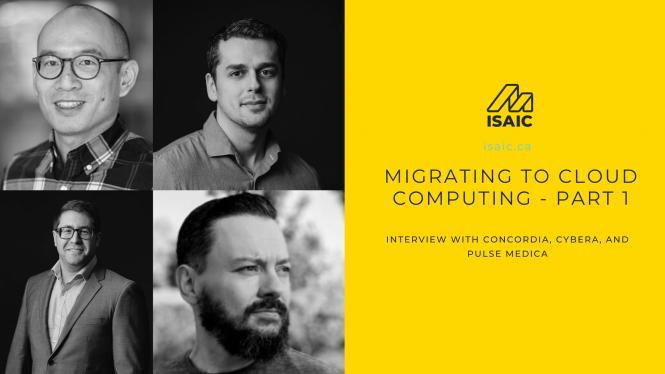According to IBM’s study in 2019, almost 50% large companies adopted AI while small medium enterprises (SMEs) adopted only 30%. One of the requirements to adopt AI is to have the appropriate infrastructure and ISAIC is here to help you migrate to the cloud.
In celebration of its anniversary, Alberta Machine Intelligence Institute (AMII) hosted AI Week from May 24-27, 2022. ISAIC proudly took part in the community events of AI Week, presenting to almost 60 people about Cloud Computing Migration.
ISAIC: Maybe we can start with introductions. Can you share about yourself?
Concordia: My name is Ed Boraas and I’m the Chief Information Officer and Research and Development Lead for the AI Centre at Concordia University of Edmonton, which is located in Edmonton. We have about 3,500 students in various programs, primarily in undergraduate programs but we also have master’s and doctoral programs.
Cybera: Sure, I’m the data science program manager at Cybera, a non-profit company based in Alberta. We manage and operate the research and education network in the province. But for the past 12 plus years, we’ve been doing above the network type of services, such as cloud computing and recently, we’ve been heavily invested in data science. I do everything from internal-facing projects around data policies to external-facing projects with clients, which are typically SMEs or other nonprofits.
Pulse Medica: I’m Nir Katchinskiy, the CEO and co-founder of Pulse Medica and here’s Chris who oversees the machine learning team. Essentially, Pulse Medica develops a medical device platform for a treatment of retinal disease. Such disease affects 500 million people worldwide and it isn’t great. We’re trying to change it by developing a medical device that performs image-guided laser surgery driven and enabled by ML. Thus, Machine Learning plays a big aspect of everything that we’re doing in terms of diagnostics, creation, or treatment planning, and then the treatment itself.
ISAIC: Thank you. Ed, maybe you can tell us more about AI Pathways Partnerships?
Concordia: So, our relationship with ISAIC is primarily related to AIPP. The program involves training folks in all stages of life to AI and ML. I’m really happy to be a part of something collaborative like that to build educational content for people. Primarily in our case, we are looking for development and support for the student projects and student-led research.
ISAIC: Byron, you mentioned something about cloud computing and it makes me wonder… Can you tell us more about AI projects Cybera has?
Cybera: We typically work with clients through different formats, such as direct consultation for different spaces, including green tech projects and healthcare projects. If there’s an alignment of project goals and organizational values, we also work with companies and SMEs through our industry fellowship program. That is now called the Applied Data Science Lab for Economic Development Program and that’s how we’re connected with ISAIC.
ISAIC: Chris, maybe you can tell us more about Pulse Medica’s projects?
Pulse Medica: Most of our projects revolve around the idea of AI and guided surgery. We use AI to control hardware and plan surgeries.
For example, our first project was identifying something called micro aneurysms on retina images, which is a disease called Diabetic Retinopathy. It will cause debilitating degradation of vision. Our goal for this project was to look at these images and detect where in the images we should target for the treatment with our laser system. Another way to do this is to hire an opthamologist and spend thousands of hours annotating images. But we can’t really do that because we’re an early-stage startup. Instead, we used semi-supervised learning or unsupervised learning to build these models so we can detect areas of the disease and build treatment plans without the need of expert annotation.
Another project we’re working on for, an example, would be the Floater tracking. Floaters are blurry squiggles that flow through your eyes as you’re looking into a bright light. The key interest for us is to find ways to accurately track these in 2D and eventually, 3D so we can target them for treatment. We have been building AI models to essentially track these in real-time very accurately.
ISAIC: Now, maybe all of you can share the success of your AI projects.
Concordia: The AI Pathways Partnership programs are actually new to Concordia so really, it has been exciting to be able to come in and hit the ground running and deal with a relatively large cohort of students and to be able to meet their needs.The support we receive from ISAIC is really quick and were easily implemented. We have nothing to worry ourselves about the technical details and when it came to building and implementing, ISAIC came to help the large cohort of students.
Cybera: In terms of problem solving, Cybera does quite a range of things from data wrangling to the development of ML proof of concept and prototype projects, working with small data sets, as well as big data sets. We really are trying to apply the state-of-the-art technologies and tools to these problems to solve whatever business problems people are facing.We do our best to engage clients and help them throughout their journey because oftentimes, this was our clients’ first foray into data science or AI.
Pulse Medica: Pulse Medica is founded in mid 2020 and we have been operating for about 2 years as a company. We had two successful fundraising rounds. We’ve built a world class team of engineers - we’re about 22 individuals in the company and we essentially have two prototypes that we’re going to put into clinics here in Edmonton. We’re just in the process of getting approvals from Health Canada. So, it’s very exciting so far and a lot of success in terms of ML.
ISAIC: Now, let’s shift a little bit to infrastructure. What cloud services have you used before and can you tell us your expectations before ISAIC?
Concordia: We used PLO before in a number of contexts from an IT point of view. We’ve used the big names that you may have heard before, providing some of our infrastructures for just general campus and campus operations. We also have a really good relationship with Cybera and we used their Rapid Access Cloud. But when we’re looking at designing the new course programs, we really need something that has a lot more purpose built in and a much more tailored fit for what we’re doing in the ML program. That’s how we turned to ISAIC. We needed a partner that understood our needs as an educational institution and who was able to sit down with us to understand what we were trying to accomplish and how we’re going to do that to make sure that we’re building a solution that fits the needs of our students, rather than just taking something off-the-shelf (that is static). Folks at ISAIC really helped us making sure that we get exactly the right build for our use case.
Cybera: Cybera has a pretty long experience with cloud computing - I think for about 12 years now. We were the first in establishing an open stack production environment in the world and in Alberta. So, we have quite a bit of experience running our own Rapid Access Cloud environment. Internally, we encourage our data science team (data scientists and developers) to use cloud computing infrastructure and resources to manage their data. Cloud computing is great and you should use cloud computing. We also try to leverage cloud computing in our projects, including the data science projects.
Pulse Medica: Regarding data, we have access to one of the largest image databases in the world. We deal with tons and tons of data. In terms of cloud infrastructure, it was really difficult to predict what kind of resources we needed particularly when it comes to the kind of GPUs and memory we need, as well as storing the data, which can be expensive. Being able to explore without a huge capital investment on our part, as well as being able to scale the resources (adding GPUs, etc.) was very important.
We were looking for a local place to store the data and do all of our computations and processes because we’re dealing with sensitive patient information. We wanted to make sure that the data is put in a safe place that is local here and that was the opportunity to collaborate with ISAIC.
ISAIC: How did you get to know about ISAIC?
Concordia: Well, some of the partners we’ve been working with through AI Pathways Partnership are also partners of ISAIC. AIPP has really been the centre of building bridges.
Cybera: Sure. So, based on our experience setting up our own cloud infrastructure service, Rapid Access Cloud, we helped advise ISAIC right from the get go. For example, we discussed the options they might have in terms of setting up their infrastructure and we provided advice and lessons learned in terms of what worked for Cybera and what didn’t work well for us. I think ISAIC definitely took the information and turned it to services with really nice products and really nice services that are user-friendly.
Pulse Medica: It is kind of an interesting conversation because what happened was that Pulse Medica was just started and we had this shared space to sit at the University of Alberta (we were a spin-off company from the university). In that shared space, we got to know about ISAIC and we asked them what they were doing. They mentioned infrastructure and long story short, we built a relationship and we have been working together for about two years now.
To be continued


